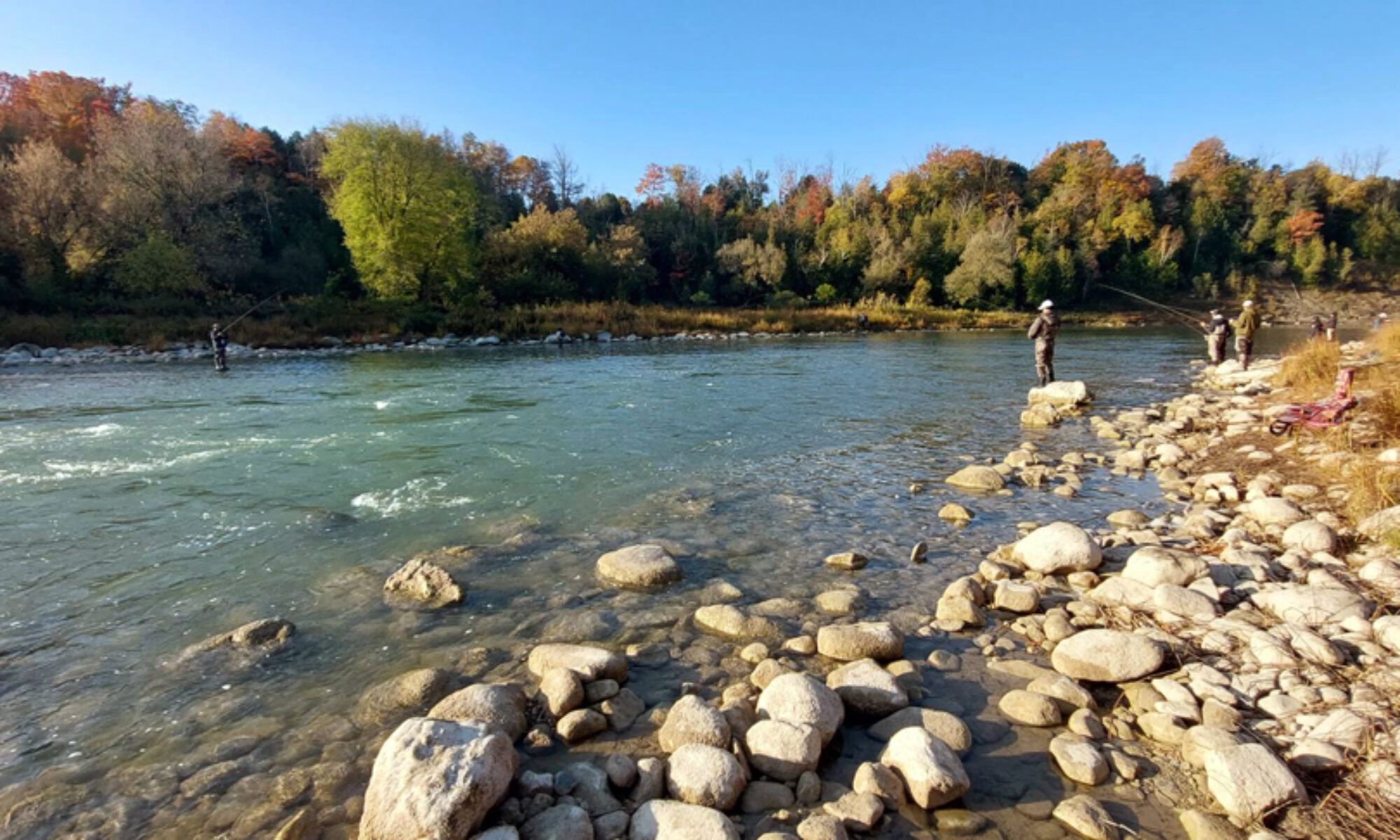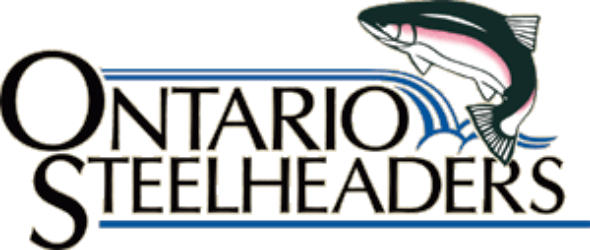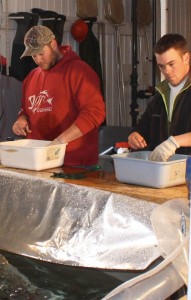The Lake Huron fishing Club raises 60,000 steelhead (rainbow trout) at their Kincardine Hatchery annually. These fish are hatched from eggs collected by members of the Ontario Steelheaders at Denny’s Dam on the Saugeen River during the spring. After being nurtured by LHFC volunteers for 1 year, these juvenile fish are released far upstream in the Saugeen and from there; they begin their lives in the wild, both in the river and Lake Huron proper. To identify these hatchery-raised fish from wild trout, Ministry of Natural Resources’ protocol calls for the clipping of the adipose fin on these steelhead. This task is carried out by Ontario Steeheaders and LHFC volunteers. Over the course of two weekends, the entire 60,000 juvenile trout were clipped. This is not easy work either. Crews of 4-8 volunteers surround the tanks and carefully lop off the tiny fin located along the back near the base of the tail. This was like a factory production line, but the goods we were producing were fish! Mortalities from this procedure are surprisingly low, with only 2 fish succumbing to stress in the weekend I was present.
Hatchery Data at a Glance
Kincardine Trout Hatchery Stocking Totals
| Year | Species | Released | Eggs Used | Fin Clip |
|---|---|---|---|---|
| 2006 | Rainbow Trout | 40,969 | 64,848 fry | LV |
| 2006 | Brown Trout | 62,472 | 75,139 | |
| 2007 | Rainbow Trout | 69,479 | 112,678 | RV |
| 2007 | Brown Trout | 71,449 | 81,844 | |
| 2008 | Rainbow Trout | 56,032 | 89,560 | RV |
| 2008 | Brown Trout | 51,359 | 55,800 | |
| 2009 | Rainbow Trout | 57,359 | 100,739 | AD |
| 2009 | Brown Trout (F) | 51,923 (F) | 61,765 (F+G) | |
| 2010 | Spring Rainbow Trout | 56,685 | 110,526 | AD |
| 2010 | Fall Rainbow Trout (D) | 20,683 (D) | NA | |
| 2010 | Spring Brown Trout (G) | 4,995 (G) | NA | |
| 2010 | Fall Brown Trout (H) | 49,149 (H) | 67,616 (H+K) | |
| 2011 | Spring Rainbow Trout (E) | 52,676 (E) | 131,701 (D+E) | AD |
| 2011 | Spring Brown Trout (K) | 7,861 (K) | ||
| 2011 | Fall Brown Trout () | 58,449 | 68,828 | |
| 2011 | Fall Rainbow Trout (A) | 62,408 (A) | 233,411 (A+B+C) | |
| 2011 | Rainbows to SSA (B) | 27,845 (B) | NA | |
| 2012 | Spring Rainbow Trout (C) | ~63,000 (C) | NA | AD |
| 2012 | Fall Brown Trout | 71,372 | ||
| Year | Species | Released | Eggs Used | Fin Clip |
TOTAL: 1,911,078
Overseeing the clipping duties was Kincardine hatchery manager Al Wilkins. Wilkins took the time to explain to me the ins and outs of the hatchery and exactly what the LHFC provides the angling public with in terms of fish stocked. 60,000 of both rainbow and brown trout are raised annually in the Kincardine hatchery. The rainbows are part of a joint program with the Ontario Steelheaders and destined for the Saugeen at stocking time in April. This past fall saw the LHFC and Ontario Steelheaders raise an extra 50,000 steelhead which were released as fall fingerlings to compliment the 60,000 yearlings that were just clipped. That is a lot of trout! The browns are raised to yearling size as well and seeded into the waters along the Huron shoreline from Point Clarke to Pike Bay and beyond. The LHFC also runs a second hatchery in the town of Port Elgin. This facility is also manned by volunteers, and raises Chinook Salmon for the anglers of Lake Huron. This year the club collected 120,000 salmon eggs in the fall and they have hatched out and are now under the close supervision of Port Elgin hatchery manager Gary Biederman until they are stocked as fingerlings in the spring.
This process of raising fish is not cheap. It costs the LHFC about $10,000 to raise each species. Under the MNR CFWIP program, clubs are allotted funding to offset some of the costs of operating a hatchery, but overall, the contribution from the government is minimal. The LHFC relies on fund raising, contributions from the Ontario Steelheaders, and monies generated from the club’s summer fishing event; the Chantry Chinook Classic. This derby will once again take place in late July and early August on the shores of Lake Huron.
Hats off to everyone involved in transforming this fishery. Our achievements are made possible by “Teamwork in Action”


